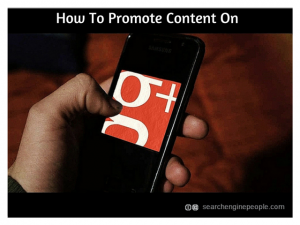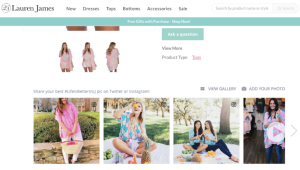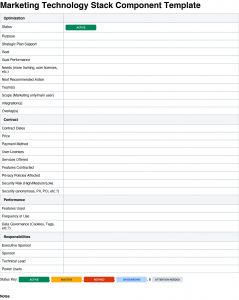The rules of the SEO game have changed over the years, but columnist Pratik Dholakiya has some solid strategies for increasing search visibility and authority that you can safely use in 2016.

Improving your rankings isn’t as simple as it used to be. As businesses have become more invested in SEO, search ranking algorithms have grown smarter and more sophisticated. The result is that many techniques that used to be acceptable are now considered gray-hat or black-hat — and in some cases, can even earn you a traffic-throttling Google penalty.
Still, the challenge remains: We need links, we need traffic, and we need rankings. How do we achieve this in an ethical manner?
Luckily, there are still powerful white-hat strategies you can leverage to improve rankings. Here are five of the best that we at E2M use successfully to this day.
1. Guest posts
Guest posting has been contested territory for some time. Back in 2014, Google’s then-head of webspam, Matt Cutts, advised that guest posting was increasingly ineffective at building links. If you’re doing a lot of guest posting, he warned, “you’re hanging out with some really bad company.”
It’s easy to see why guest posting has come under fire in recent years. After all, guest blogs used to be a really easy way to get backlinks — maybe a little too easy. All too often, the standard guest post is 500 words long, includes no links to sources (other than the author’s own website) and presents no thoughtful commentary or new insight.
I’m not saying you can’t have a worthwhile 500-word post. Of course you can. But the majority of guest bloggers aren’t looking at readers’ concerns. They don’t care whether you derive value from the post or not. They care about getting a link, and they’ve nailed the absolute bare minimum required to achieve that end.
That drags the name of the “guest blogger” into the mud. But it also gives you an opportunity.
Rather than focus on acquiring links, guest blogging can help with SEO in other, less direct ways. By consistently posting excellent, in-depth content on relevant blogs, you’ll drive up authority and get more social shares, along with signs of quality that Google takes seriously. You’re also more likely to get actual traffic to your website from high-quality content — which is what link building is supposed to be about anyway.
Stuffing low-quality posts with links to your site — or paid third-party links — may be a thing of the past. But guest blogging is still a powerful tool to increase authority and search visibility.
2. Infographics
Infographics are a powerful way of getting a point across quickly and intuitively. That’s one reason why they’re so popular. But they’re also an effective way of getting high-quality backlinks quickly.
The trick to getting that to happen is in the embed code. After you create your infographic, you can use a tool like the SeigeMedia Embed Code Generator to build the code. This is the code that people who want to post your infographic to their own site will use.
So include a request to link back to your site, and make it easy by bundling exactly the URL you want them to use into the infographic’s embed code. That way, they can’t avoid seeing it. Sure, some people will ignore it, but most people will attribute your infographic when they post it — and make the attribution a hyperlink back to your site. Bingo!
To get your infographic in front of more people, use infographic publishers (Visual.ly is one). Most will want a 70-or-so-word description of the infographic; then they’ll store it, and when other content marketers and bloggers want a graphic, they’ll be more likely to find yours. The free infographic publisher landscape changes quite quickly, so to make sure you’re not putting your content on dead sites.
Want some extra juice? On those sites, you can search for infographics on the same subject as yours, then reach out to users who have accessed those infographics and ask if they’d be interested in yours. Our annual infographic on Google’s algorithm updates (now in its fourth year) was picked up by Entrepreneur, Social Media Today, Marketing Land and more!

All in all, infographics are a great way to get quality backlinks from a range of relevant sites.
3. Personal blogs of the CEO & other employees
Blogging lets you connect with your readers. Most blogs are written in an informal, conversational style that’s a long way from what you’d see in a newspaper or magazine. And that’s true of professional blogs, too.
Using personal blogs at work — the CEO’s blog, for instance — can be a way to generate content that feels natural and personal. These people can blog about their own interests, and those interests are bound to overlap with the company’s targeting.
Blogs like this are also a way to offer specific insights, because certain employees will know things no one else on your team knows. For example, what are the legal implications of the product you’re developing? Get someone from legal to blog about it. Suddenly, readers in a similar position at other companies suddenly have a reason to read this content.
Personal professional blogs can be done one of two ways. You can offer a multi-voice blog on your company website, either as posts within the larger company blog or as separate sections with their own visual branding. Or you can have team members blog on their own domains and occasionally refer back to the company blog when it’s appropriate.
4. Beat the champ
How do you become the champ? By beating hundreds of could-have-been-a-contenders? No. You have to seize the top spot from the person who’s already there.
You can do the same thing with link building and SEO content marketing. Look at content that’s already performing well in your vertical. Find a piece of content that a) you think is awesome, and b) is performing well in organic search. Drop the URL into the usual suspects — like Ahrefs or Open Site Explorer — and see which sites are linking to it. Download all the linking sites into a spreadsheet.
Then, pick the post apart.
Would it work better if it were longer? If you’re looking at the “10 best ways to get more traffic with your blog,” maybe you should write the 20 best ways, or the 100 best ways.
Would it work better if it were more detailed? Maybe do the same number of methods, but in crazy, inch-by-inch detail.
Remember that content is content. Your content doesn’t have to be a blog post. It could be an infographic, or a YouTube video, or a Vine. It could be a stand-alone resource page.
But that’s only going to be a winner for you if you’re getting your content seen. Once you’ve created your super-linkworthy content, you have to reach out to the right people.
All too often, reaching out to people is a stab in the dark. “You might be interested in something along these lines… ” Yeah, but probably not. The success rate of these attempts is often very low.
But you already have the lowdown on the people who would be interested in content like this. Remember when you used Ahrefs, Open Site Explorer or the tool of your choice to find out who was linking to the content you just improved upon? Check the spreadsheet you put together earlier, and then do a quick sanity check. Pages that don’t make sense, like article directories and forums (Yes, they still exist) can go.
What are you left with? A list of people who are actually very likely to be interested your content.
5. Giving interviews
CXOs and other employees are great subjects for interviews. Everyone else has to produce content, too, and the word of someone in the field (especially an expert) is worth a lot. So if you’re a high-level company spokesperson or an extremely knowledgeable subject matter expert, you’re likely to be approached more often than you’d actually prefer.
You can’t take up an offer for an interview and sit there like a stereotypical used car salesman, hard-selling your own product. But you can sell your brand.
When you’re in front of the camera, or on the page, you are your brand. If you’re confident, insightful and open, viewers relate. Remember, even in B2B, the buying decision isn’t made by highly sophisticated algorithms. You’re still selling to human beings.
Viewers or readers need to see you as someone who understands the problems they’re trying to solve. That’s partly competence and partly a hard-to-define “she gets it” factor.
Interviews also offer the opportunity to talk directly about your company’s offerings. You can mention new initiatives, updates, new products or ventures. Talking about these in interviews gets them exposure. Add a link to the interview text if you’re being interviewed by email, or spell the URL out in a video interview.
Recently, my colleague, Rohan Ayyar, who knows a lot about remote work best practices from his project management days, was interviewed along with other experts by the guys at Proofhub, from which he managed to get a link to our executive branding service, Preceptist, all the while keeping it relevant and non-promotional. See what I mean?
Conclusion
It’s still possible to improve your rankings with careful strategy. Increasingly, it’s about leveraging content marketing to improve linkability. That can be done by targeted outreach, by encouraging social sharing or by using content itself to encourage linking. But it all helps drive up ranking.
[Article on Search Engine Land.]
Some opinions expressed in this article may be those of a guest author and not necessarily Marketing Land. Staff authors are listed here.
Marketing Land – Internet Marketing News, Strategies & Tips
(111)
Report Post







